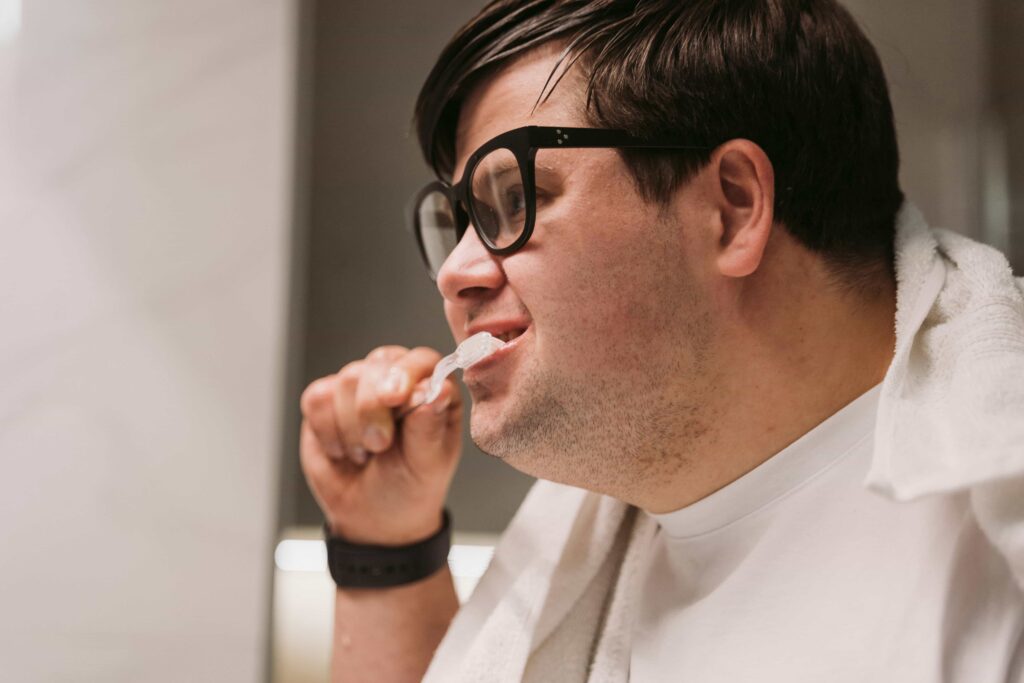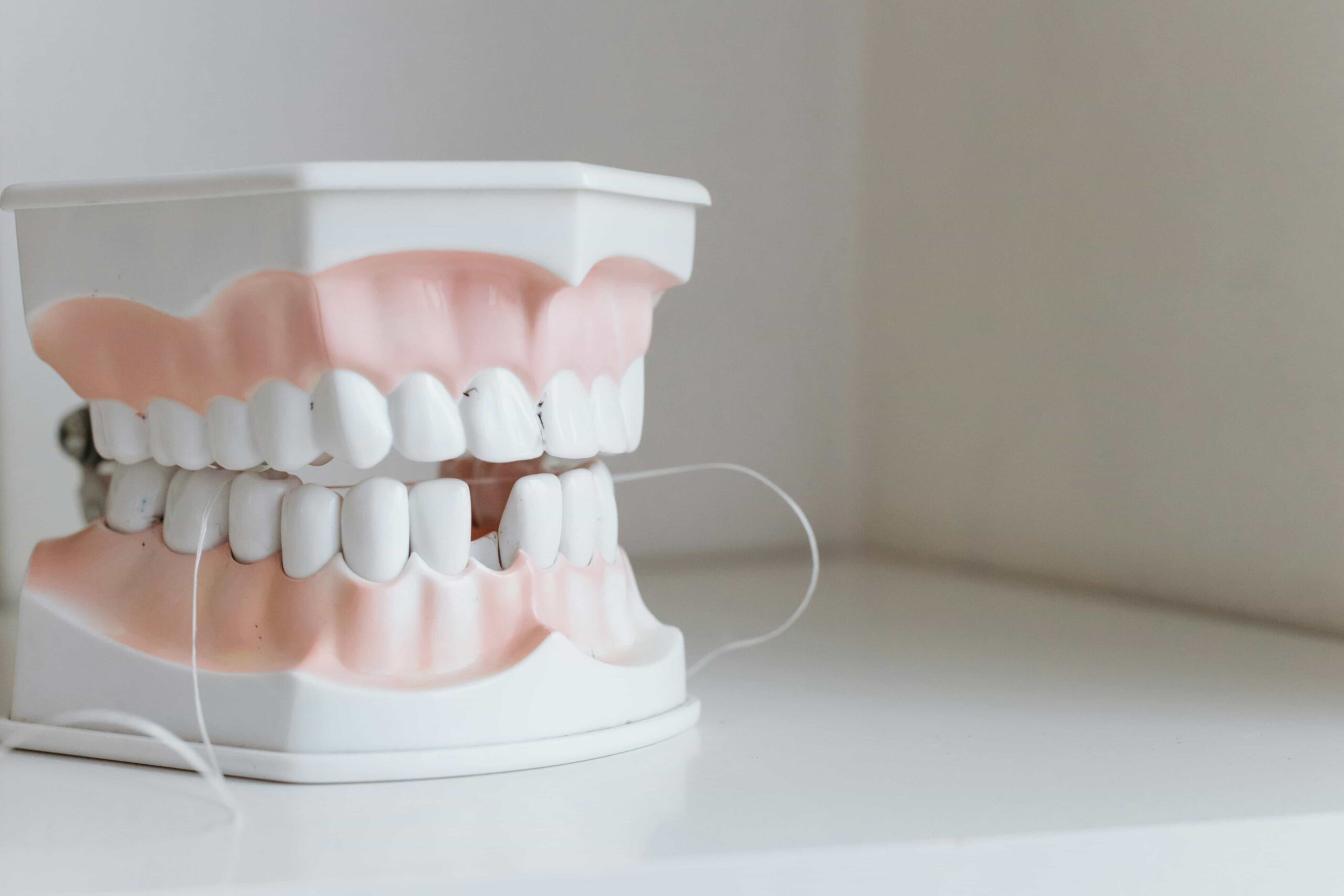When you first get braces, there’s a lot to adjust to—from choosing the best foods to maintaining proper oral hygiene. One of the biggest questions orthodontic patients face is, “Can you floss with braces?”.
The short answer is yes, and it’s a crucial part of keeping your teeth and gums healthy during treatment.
If you’re wondering how to make flossing with braces manageable or if it’s even worth the effort, this guide breaks it all down for you.
Key Takeaways
- It’s important that you floss with your braces to maintain good oral hygiene and prevent tooth decay.
- Flossing with braces requires special techniques and tools, such as floss threaders and interdental brushes.
- Consistency is key when it comes to flossing with braces, so make sure to incorporate it into your daily oral care routine.

Why Flossing With Braces Is Essential
Do you have to floss with braces? Absolutely. Braces can trap food particles and plaque around the brackets, wires, and your teeth, increasing the risk of cavities, gum disease, and even bad breath.
Regular brushing isn’t enough to reach those tight spaces between your teeth or under wires.
Flossing ensures you remove debris and maintain optimal oral health while braces do their job of perfecting your smile.
The Risks of Skipping Flossing
Without flossing, you leave your teeth and gums vulnerable to:
- Plaque buildup leading to tooth decay.
- Swelling and redness caused by gum inflammation (gingivitis).
- Extended treatment time since poor oral health can delay orthodontic progress.
By taking a few extra minutes to floss daily, you protect both your teeth and the progress of your orthodontic treatment.
How to Floss With Braces
Flossing with braces may seem tricky, but modern tools and techniques make it much simpler than you’d think. Follow these steps to ensure a thorough and effective floss:
Step 1: Use the Right Type of Floss
Look for orthodontic-friendly products, such as:
- Waxed floss to prevent it from snagging on brackets and wires.
- Floss threaders that help slide regular floss under your wires.
- Pre-threaded floss picks like Platypus Flossers, which are designed specifically for people with braces.
Step 2: Thread the Floss Under the Wire
Using a floss threader, gently guide the floss under the main orthodontic wire. Make sure it doesn’t tug or bend the wire to avoid disrupting your braces.
This step might take a bit of practice, so don’t get discouraged if it takes a few tries to master. Once you’ve successfully threaded the floss under the wire, you can move on to the next step.
Step 3: Glide the Floss Between Teeth
Once the floss is under the wire, move it gently between your teeth in a “C” shape. Clean each side of the tooth and go slightly under the gumline.
This will help remove any plaque or food particles that may be stuck between your teeth.
Be careful not to snap the floss onto your gums, as this can cause pain and irritation. Gently glide the floss up and down instead of forcefully pulling it through.
Step 4: Repeat
Continue the process for each tooth until you’ve flossed your entire mouth. It takes a little patience, but you’ll get faster with practice.
Thoroughly flossing between each tooth is important for maintaining good oral hygiene and preventing plaque buildup. It also helps prevent gum disease and cavities.
Bonus Tip
For an even easier experience, consider buying a water flosser (like a Waterpik). These handy tools use pressurized water to clean between teeth and around braces. While they shouldn’t completely replace traditional flossing, they’re a great supplement.
Extra Oral Hygiene Tips for Braces Wearers
Keeping your braces and teeth clean doesn’t stop at flossing! Combine these additional steps with your flossing routine for the best results:
- Brush after every meal: Use a soft-bristled toothbrush and fluoride toothpaste to reach hard-to-clean areas.
- Rinse with mouthwash: Help reduce plaque and bacteria with an alcohol-free antimicrobial rinse.
- Visit your orthodontist regularly: Professional cleanings and adjustments are vital to staying on track.
What if You Have TADs?
Temporary anchorage devices (TADs) are small titanium screws temporarily inserted into the jaw bone to provide additional support and stability for tooth movements.
If you have TADs, it’s important to be extra careful with your oral hygiene routine to avoid any complications or infections.
The Long-Term Benefits of Flossing With Braces
Consistent flossing with braces doesn’t just keep your smile healthy during treatment; it sets the stage for a healthier, brighter smile for years to come. By preventing gum disease and cavities, you’ll also ensure that your teeth are ready to shine when your brackets come off.
And remember, braces aren’t forever, but the habits you build now will last a lifetime.

FAQ
Q: Do you have to floss with braces?
A: Yes, flossing with braces is a must. It may be more challenging and take some getting used to, but it is essential for keeping your teeth and gums healthy during treatment.
Q: Can I use regular floss with braces?
A: Traditional floss may not be the best option for those with braces as it can get stuck in brackets or wires. We recommend using special orthodontic floss or a water flosser to make the process easier.
Q: How often should I floss with braces?
A: You should aim to floss at least once a day, preferably before bed. This will ensure that any food particles or plaque that have accumulated throughout the day are removed before they can cause any damage to your teeth and braces.
Q: Can I still use mouthwash with braces?
A: Yes, you can still use mouthwash while wearing braces. However, it is important to avoid any mouthwashes that contain alcohol as this can irritate the sensitive tissues in your mouth and exacerbate any discomfort caused by your braces. Look for alcohol-free alternatives instead.
Q: What about interdental brushes?
A: Interdental brushes can also be helpful for cleaning between brackets or wires. These small brushes have a tapered shape that allows them to fit into tight spaces and remove plaque from hard-to-reach areas.
Need More Help? We’ve Got You Covered!
Braces require a little extra effort when it comes to oral hygiene, but the results are well worth it. By using tools like floss threaders, interdental brushes, and alcohol-free mouthwashes, you can maintain a healthy smile throughout your treatment.
If you’re still wondering, “Can you floss with braces?”—the answer is a yes! With the right techniques and tools, flossing is both possible and essential to keep your teeth and gums in great shape. Remember, consistency is key, and if you have any further questions or need assistance, your orthodontist is always there to help.
At Derek Damon Orthodontics, our team is here to support you every step of the way in your braces journey. Whether you’re a pro at flossing or still figuring it out, we offer tips, tools, and personalized orthodontic care to help you succeed.
Schedule a consultation today to learn how you can achieve a stunning, healthy smile with expert guidance from Dr. Derek Damon and his team in Bellingham and Anacortes, Washington.

